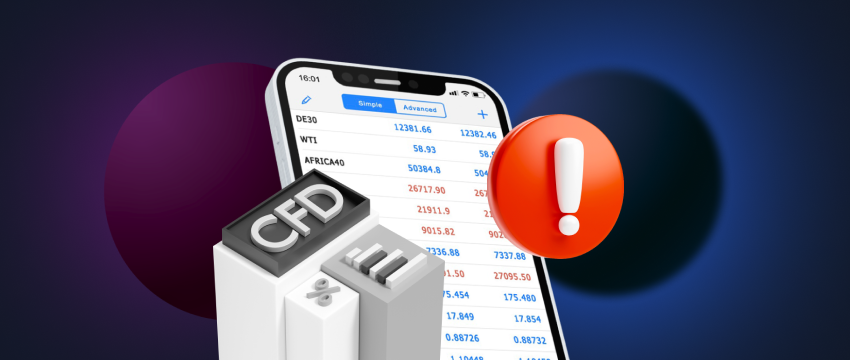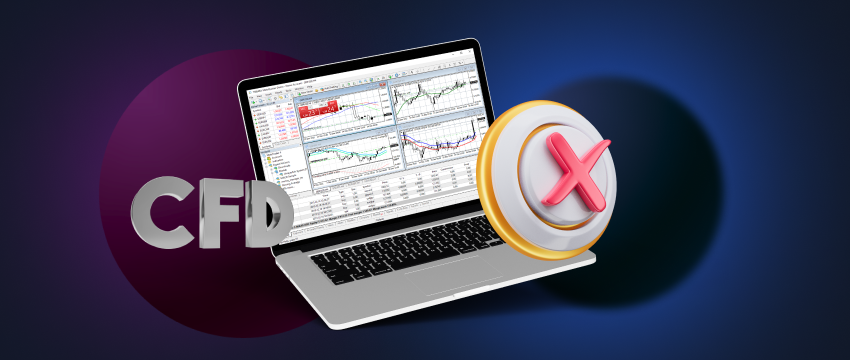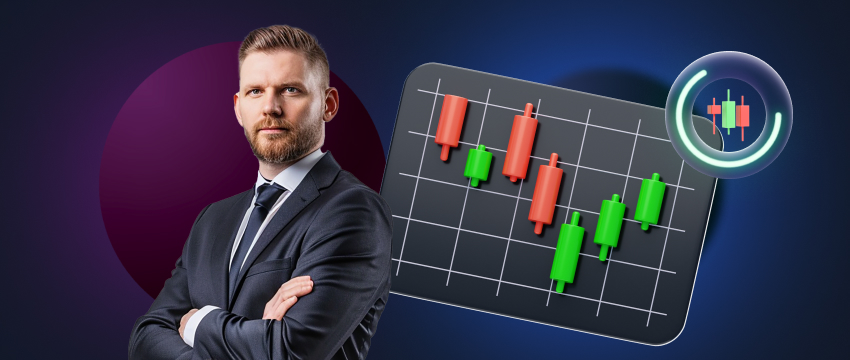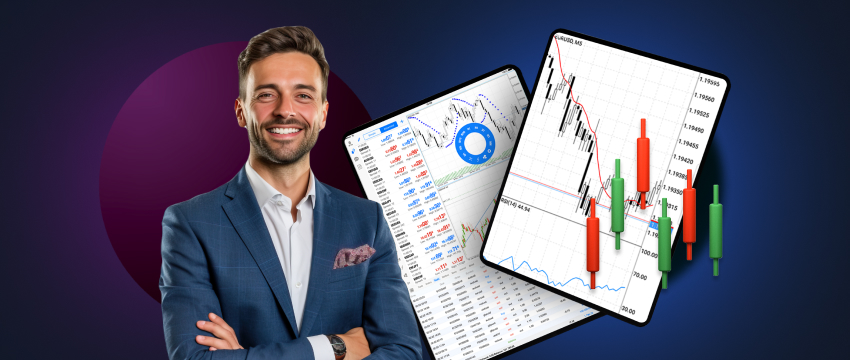As popular as CFD trading has become worldwide, there are considerable risks that this form of trading incurs. In this article, we’ll discuss some of the most significant risks that traders should be mindful of.
1. Market volatility
Traders use Contracts for Difference (CFDs) to speculate on the price movement of underlying assets. If they anticipate that prices will rise, they’ll typically decide to go long. Adversely, if they predict that prices will drop, they’ll usually opt to go short. The trading decision is ultimately based on the speculation that the price of the specific underlying asset will move in your favor.
However, markets may be quickly impacted by a range of unexpected factors that even the most educated trader may not have foreseen. This could be a shift in governmental policy, political uncertainties, economic releases, investor sentiment, industry changes, etc. This may cause asset prices to move in an unfavorable direction, resulting in margin calls that potentially can’t be met. As a result, the trader’s position may be closed or the trader may be forced to sell at a loss.
2. CFDs are leveraged financial derivatives
Leverage offers traders a way to gain larger exposure to a financial market with a smaller sum of capital. This could be 5x or even 20x the trader’s deposit (margin) amount. A trader’s total exposure compared to their margin is called the leverage ratio. However, while leverage may amplify the potential for gains, it also does the same for losses.
The reason? Well, while only a small sum of money is required to open a position, the profit or loss is calculated on that position’s full value. In the case of an adverse trading outcome, that loss may far exceed the trader’s initial capital outlay. And if proper risk management measures haven’t been adopted, the trader stands the risk of losing all their money.
3. Counterparty CFD trading risk
A CFD is a contract entered into between a broker and a trader, enabling the trader to speculate on changes in the price of the underlying asset (e.g., stocks, currency pairs, commodities, etc). The trader does not take ownership of the asset. Instead, the instrument they are trading is the contract itself. Further, the contract can only be closed with the counterparty (the broker) that issued it. This requires responsible risk management not only by the trader but by the broker too. Remember, in essence, you are relying on the counterparty to stay in business.
As a result, one may even have to contend with the possibility that the CFD provider may be taking an opposite side to you (the trader) when appropriate. But what happens if a CFD broker goes bankrupt or becomes insolvent? The trader may face difficulties accessing their funds, and face considerable losses, depending on the size of their investment.

4. No physical ownership of the asset
As we’ve already mentioned, the CFD gives no ownership rights related to the underlying asset to the trader. The trader simply speculates on the price movement of the asset. While this may eliminate the costs associated with storing or insuring different forms of assets, it also takes away any voting rights or dividends that may be associated with a specific asset type, e.g. aandelen. While this is not necessarily a risk per se, it may be considered a disadvantage by certain types of traders or investors.
5. Overtrading
CFDs are regularly used as a tool for diversifying one’s trading portfolio. Through them, a trader is able to engage with different markets and assets, rather than focusing on just one. However, while this offers a way for traders to maximize varied trading opportunities, it can also result in overtrading and exposure to a wider scope of unanticipated risk.
6. Liquidity and gapping
As we’ve already ascertained, market conditions significantly impact financial transactions, thereby increasing the potential for risk. One of these risks is liquidity or the lack thereof. This arises when there aren’t enough trades being made in respect of a particular asset. Should this happen, the existing CFD may become illiquid and require an additional margin payment or close at an unfavorable price. Additionally, due to how quickly financiële markten can fluctuate, the price of a CFD can drop before your trade is executed at the price originally agreed upon. This is known as gapping. As a result, the contract holder may lose out on profits or cover losses incurred by the CFD provider.

So how should one handle the risks that come with CFD trading?
There are several actions CFD traders can take to manage CFD trading risk, in order to safeguard their capital.
Let’s look at some of them:
Risk management plan
- Build a risk management plan that integrates important tools like stop-loss or take-profit orders on your CFD positions. A stop-loss order ensures that a trade will automatically close if the market moves against you. The order is based on a predetermined specified price and is affected when this price is reached. A take-profit order works in much the same fashion in that the trader specifies a price at which they will take a profit at which point the trade will close. Other risk management tools include trailing stop orders, limit orders, etc.
Trading plan and goals
- Develop a trading plan and ensure it adopts the risk management strategy you plan on implementing. Stay focused on your trading goals and maintain discipline by sticking to the plan. Only make adjustments when absolutely necessary. Avoid impulsive decisions.
Do not over-leveraging
- Avoid over-leveraging as this can lead to a significant loss of money. Ensure the size of your positions aligns with your risk tolerance and available budget. If you’re new to leveraged products, consider trading in smaller sizes until you’ve gained sufficient expertise and understanding of how they work.
Keep learning
- Keep learning, regardless of your level of CFD trading experience. Educate yourself on the different markets and explore new trading strategies. Access educational resources continuously to widen your scope of knowledge. There is an abundance that can be consumed online, be this trading blogs, podcasts, videos, webinars, seminars, and so much more.
Demo trading account
- Make use of a demo trading account to refine your CFD trading skills. It’s a great way to make use of a simulated trading environment that allows you to test your CFD trading strategies, practice using technical analysis to make trading decisions, and learn more about real market conditions. This is all made possible using virtual funds meaning you don’t need to put your own money at risk as you gain vital skills and expertise. With enough time and practice, you’ll eventually gain the confidence to move over to live CFD trading.

Why become a T4Trade CFD trader?
T4Trade is a renowned broker used by global traders to execute their trades. The broker’s appeal lies in its exceptional, comprehensive service offering. This includes a variety of customized account types, flexible leverage, fast deposits, and withdrawals, quick execution of orders, and tight spreads.
The service offered by T4Trade is further enhanced by a robust customer support team who are available 24/5 to help traders with all their queries.
The team is multilingual, and knowledgeable, and can be reached through varied communication channels like live chat, email, or telephone.
Disclaimer: This material is for general informational and educational purposes only and should not be considered investment advice or an investment recommendation. T4Trade is not responsible for any data provided by third parties referenced or hyperlinked in this communication.




